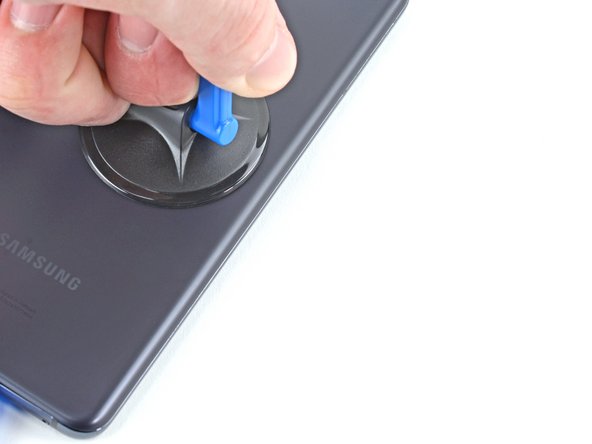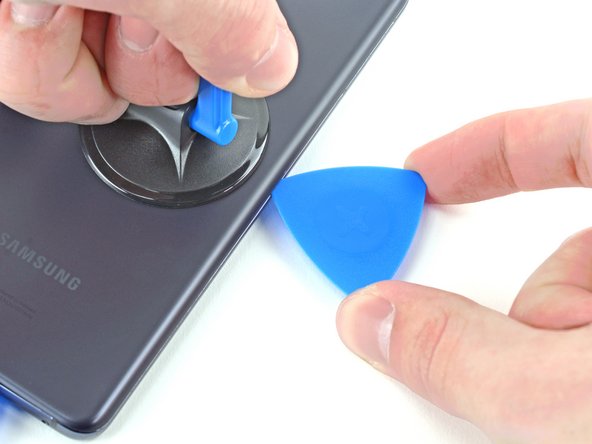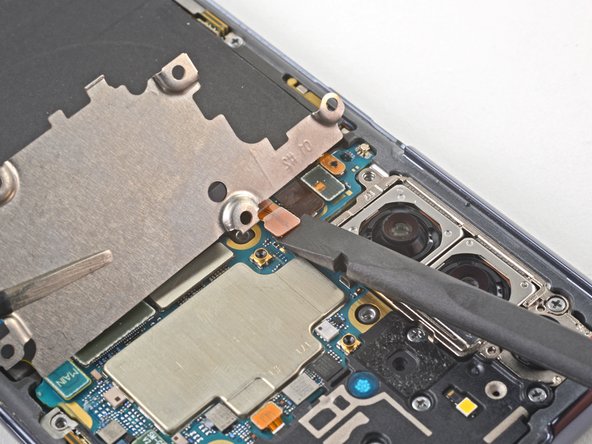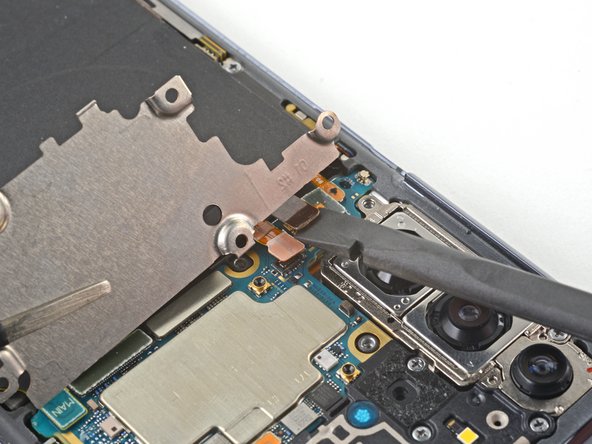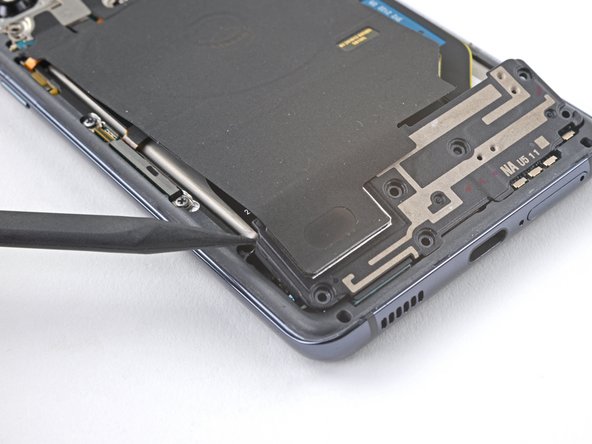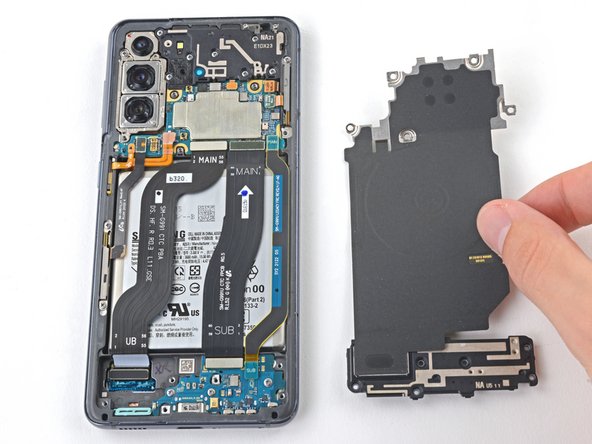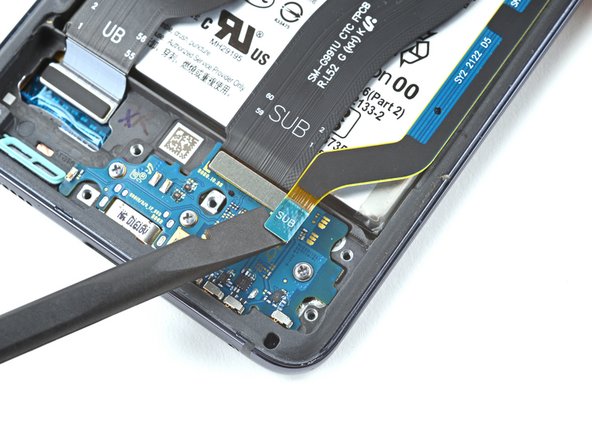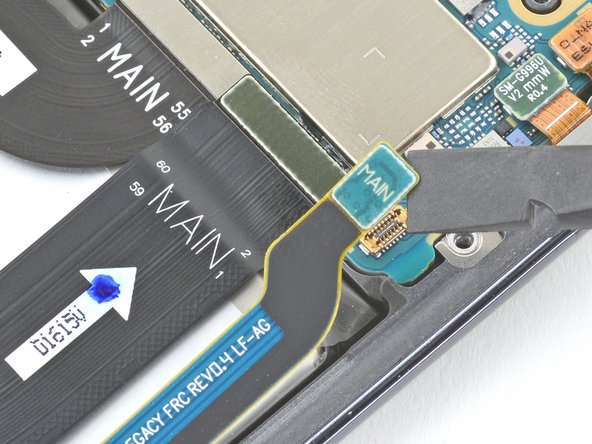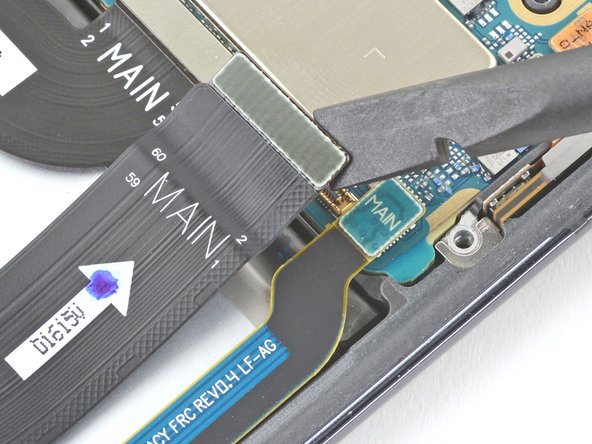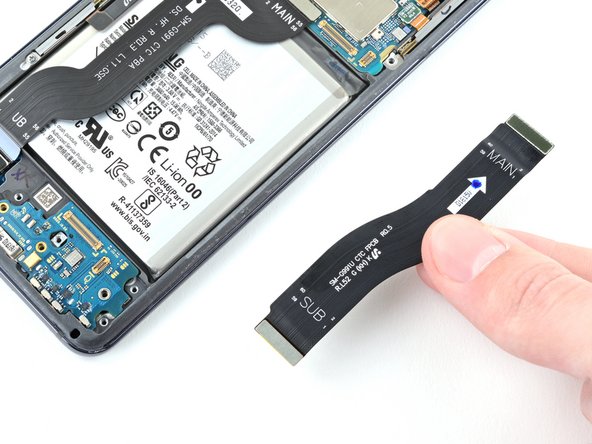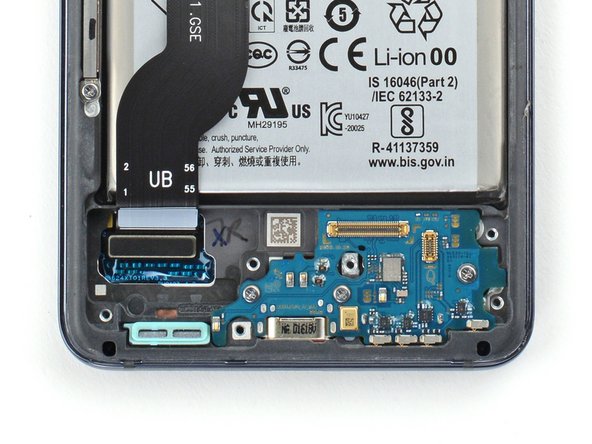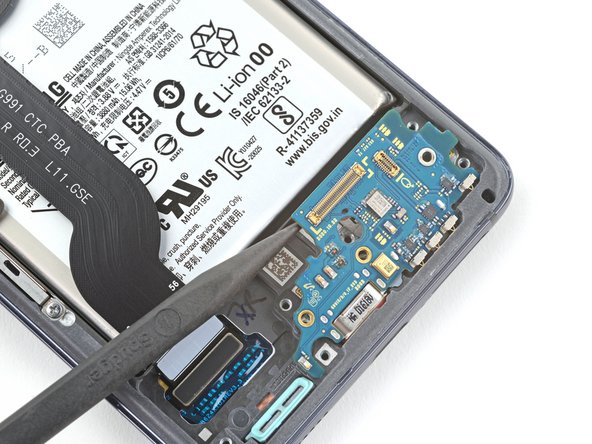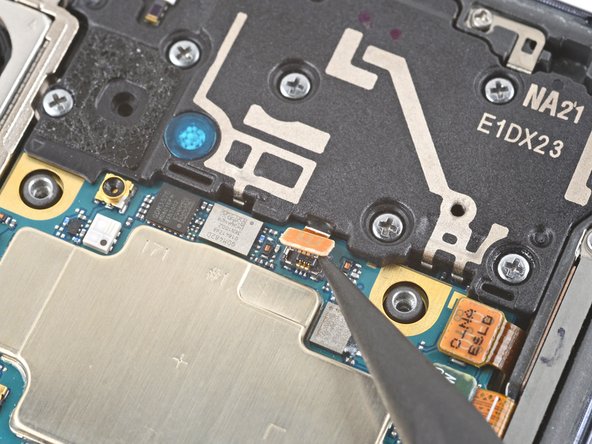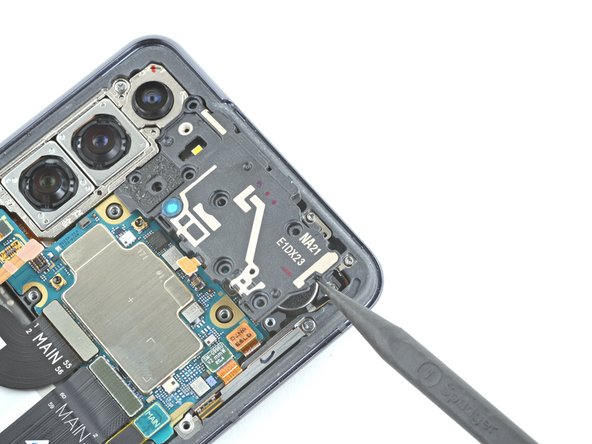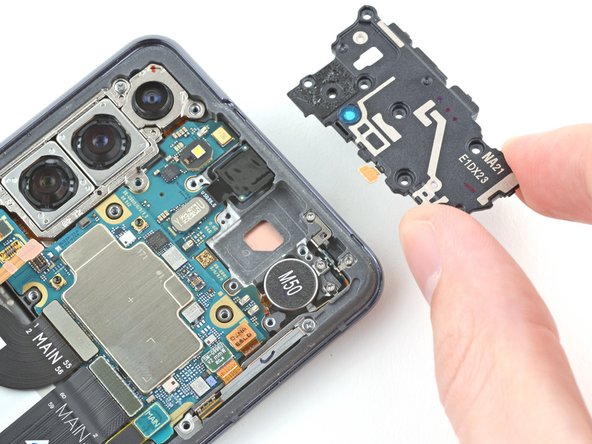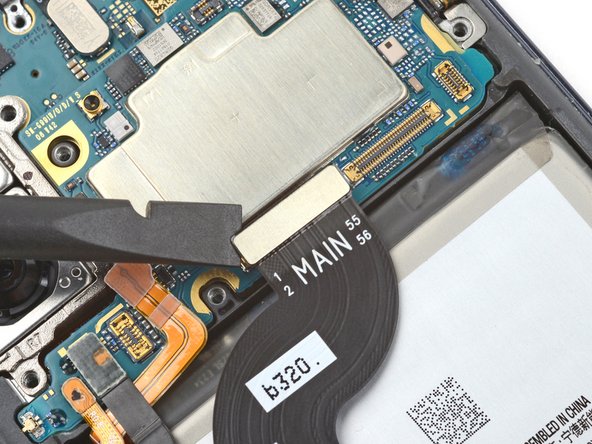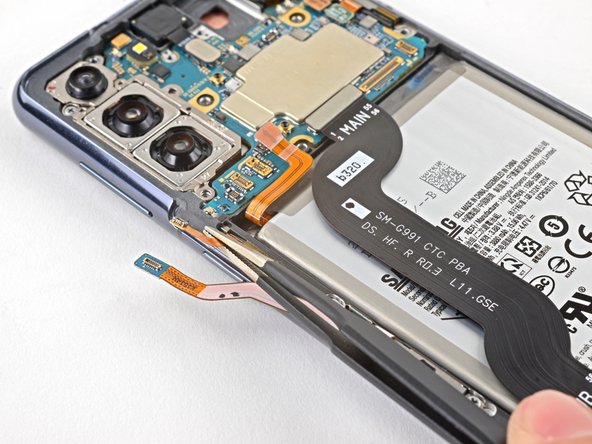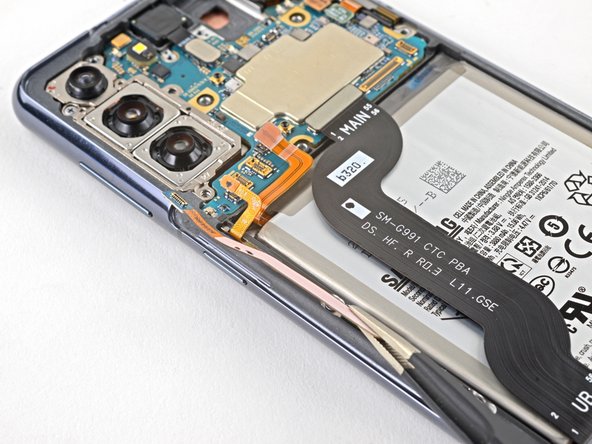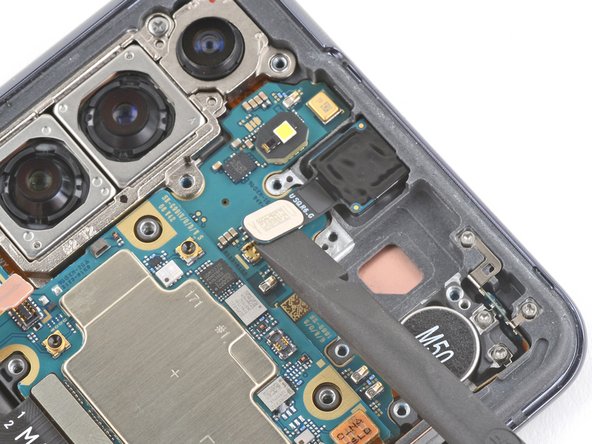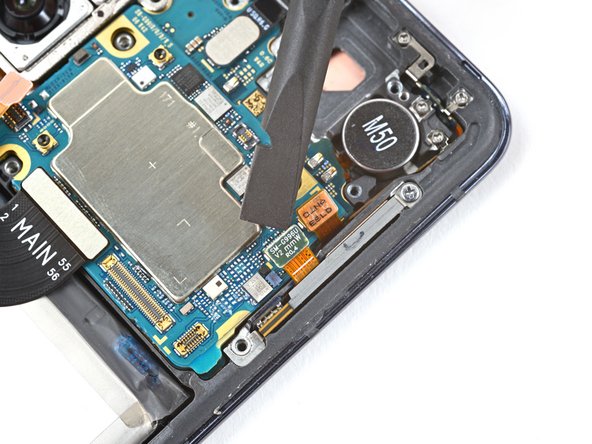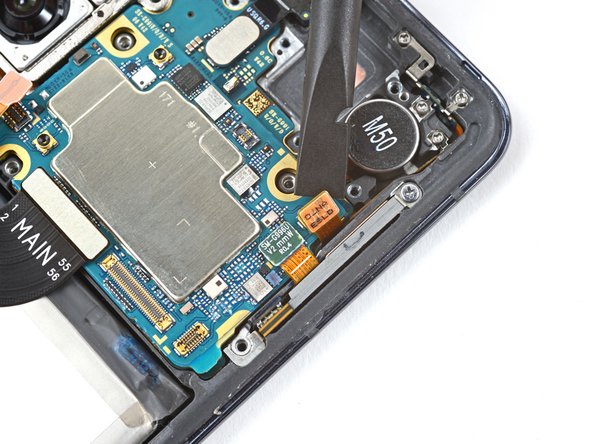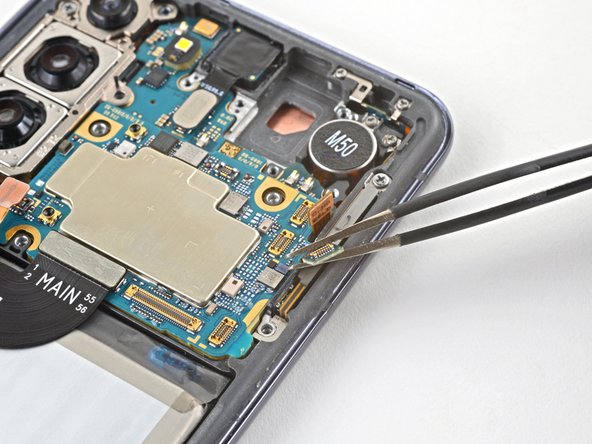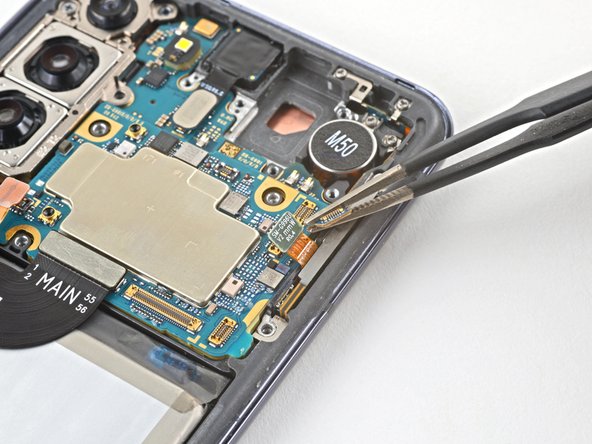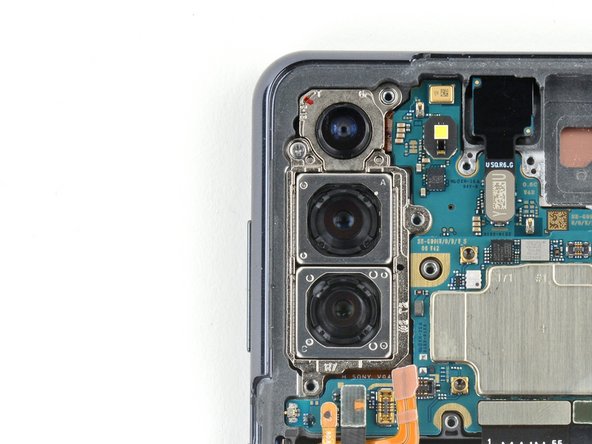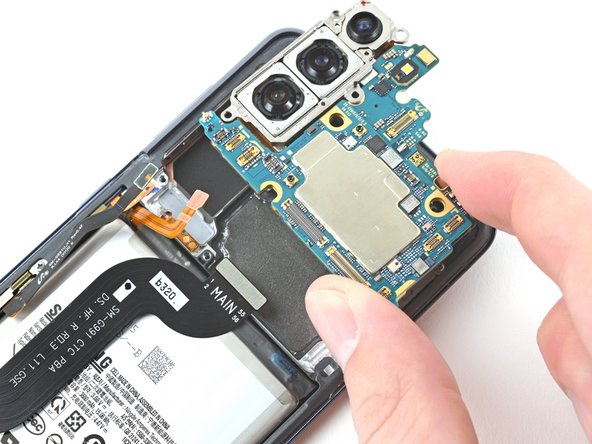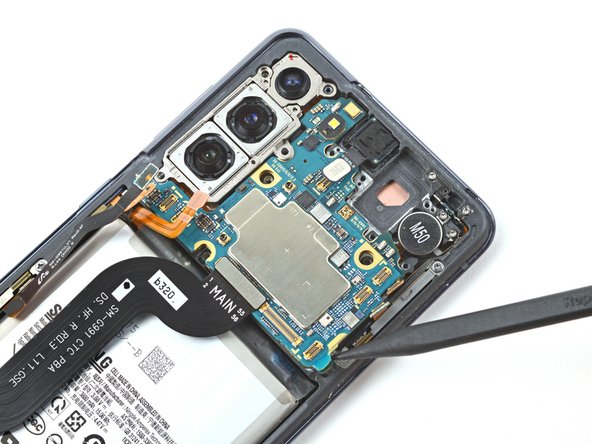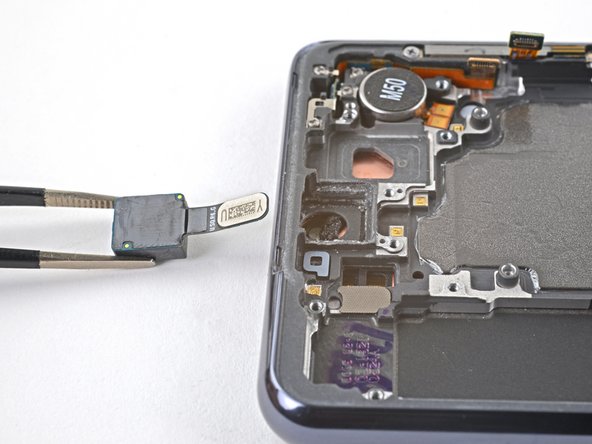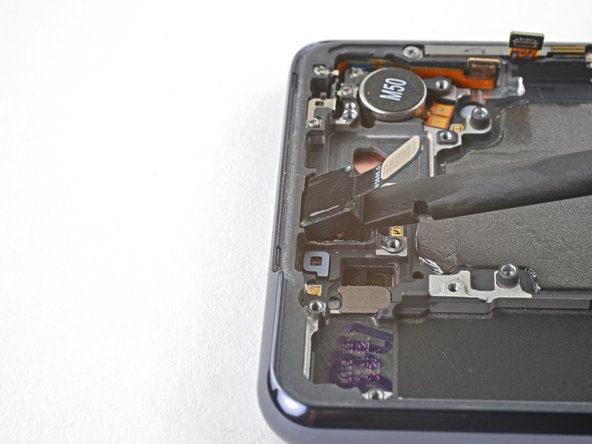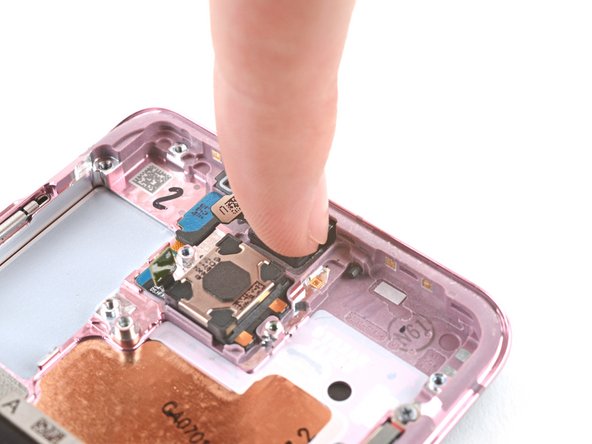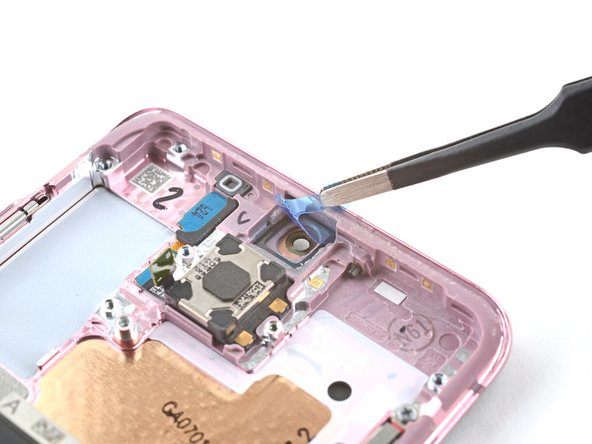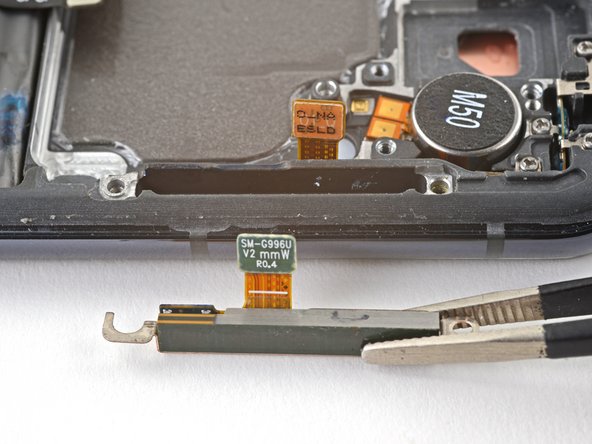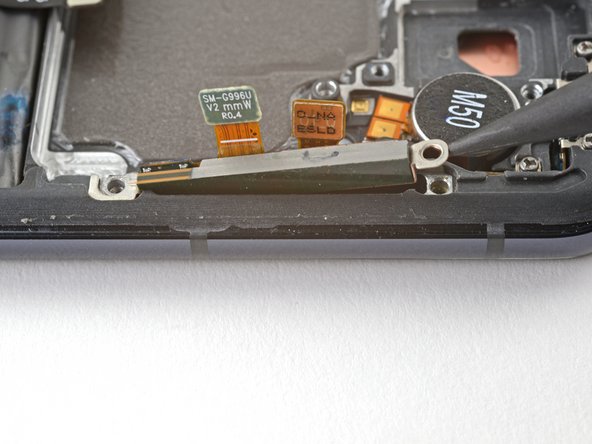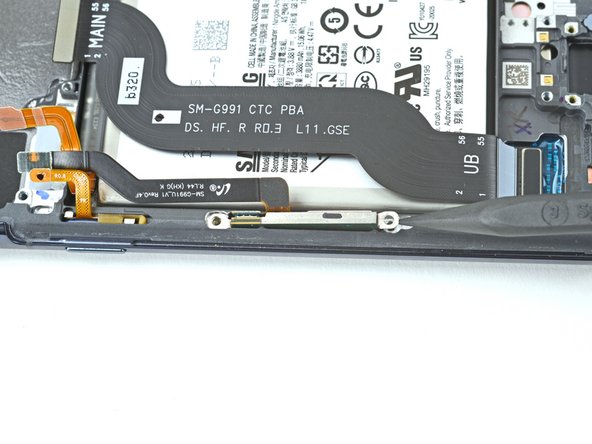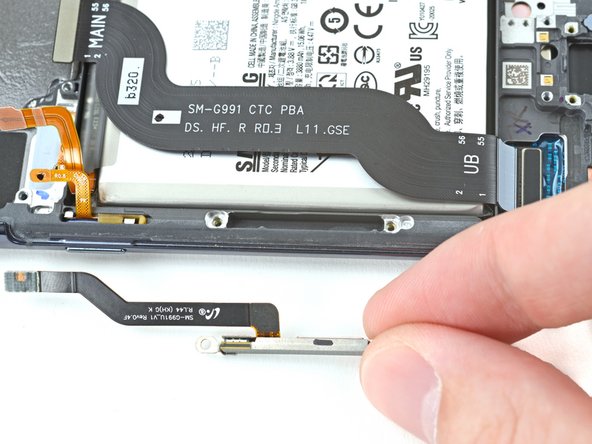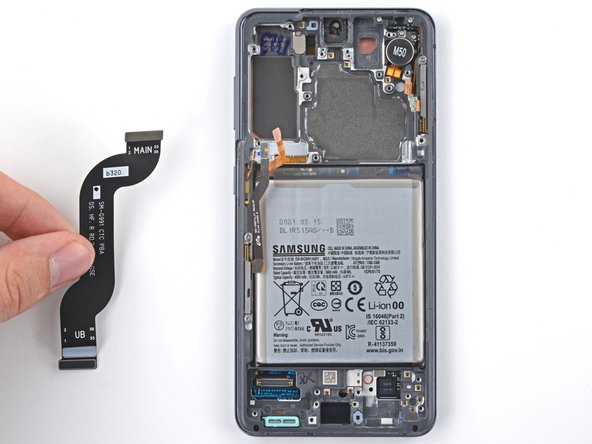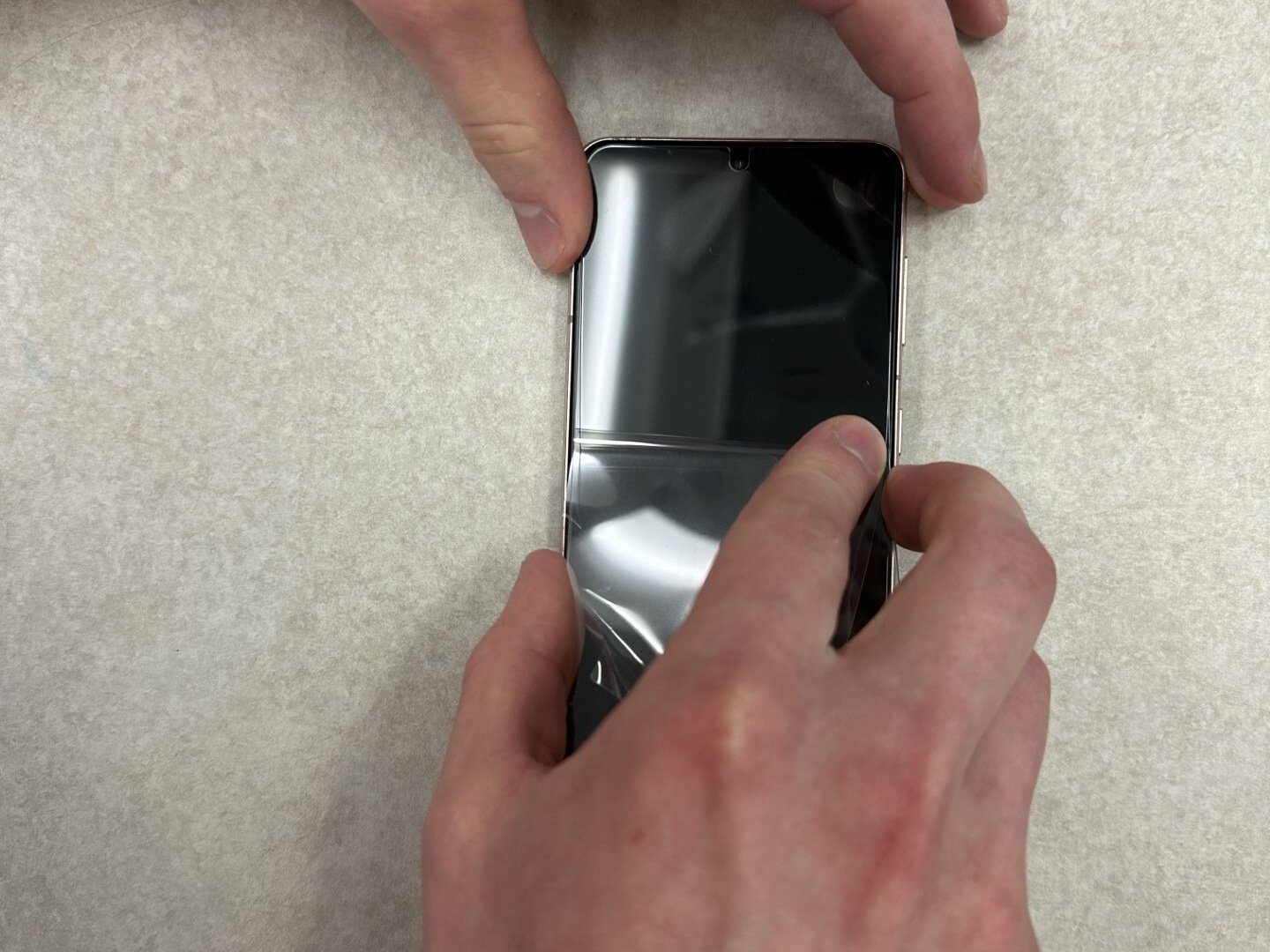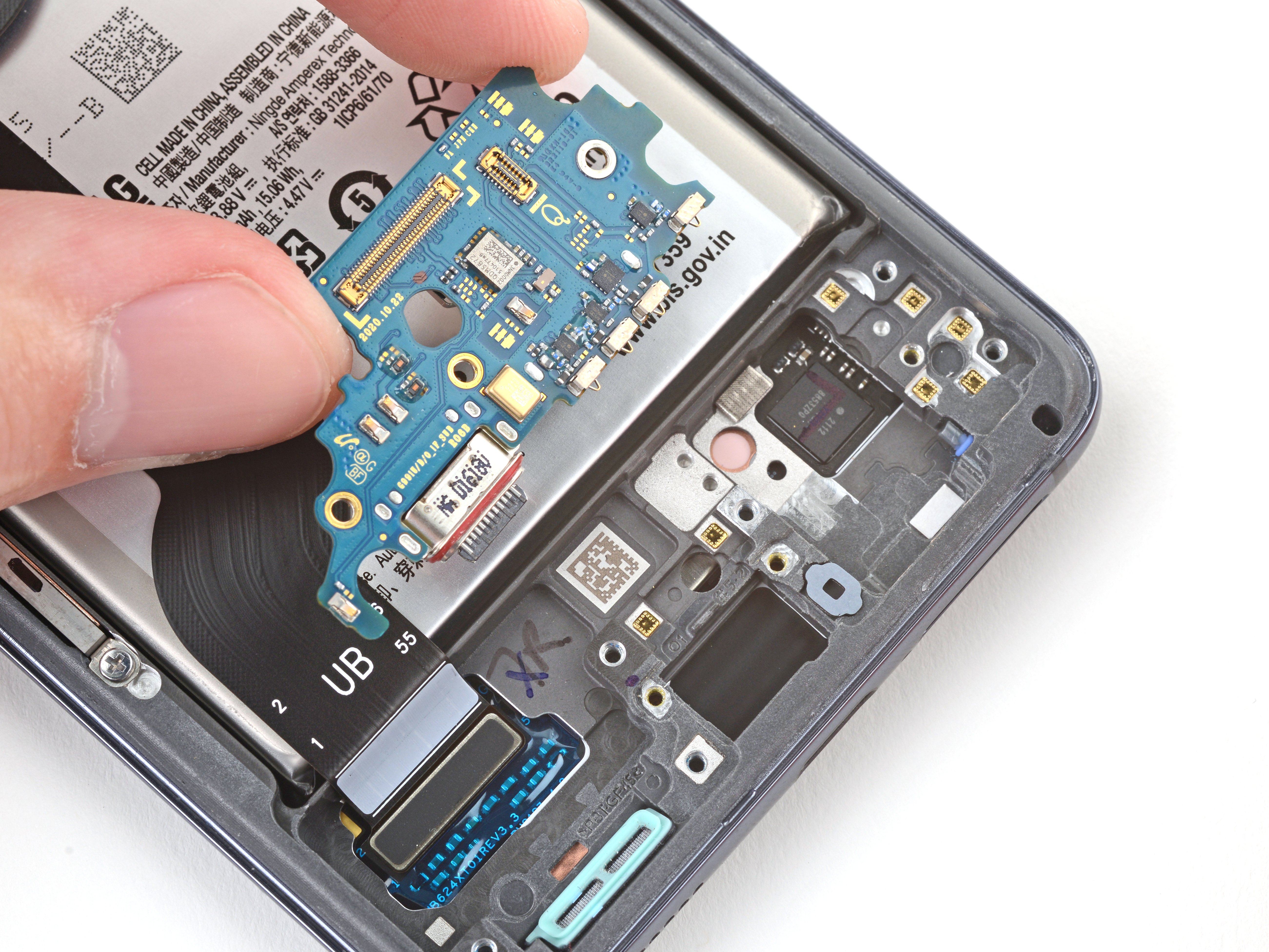Samsung Galaxy S21 Screen and Battery Assembly Replacement
Duration: 45 minutes
Steps: 50 Steps
This guide covers the ins and outs of swapping out the screen and battery assembly. Ready to get that device looking and feeling fresh? Just follow along, and if things get tricky, you can always schedule a repair to keep things smooth.
Ready to breathe new life into your Samsung Galaxy S21? This step-by-step guide will walk you through swapping out the screen and battery assembly — that’s the whole shebang, including the display, battery, and frame all in one piece. Before diving in, double-check you’ve got the right part, and if your battery’s looking a little swollen, play it safe. Make sure to fully drain the battery before starting—this helps prevent any thermal surprises if things go awry. Keep in mind, your water resistance may take a hit, and the IP rating won’t be the same after you finish, but with a steady hand and some patience, you’ll get the job done. Some images might show tiny gaps or missing bits—that’s normal and shouldn’t throw you off. Once you’re set, just follow the steps carefully, and if at any point you want extra help, you can always schedule a repair.
Step 1
Oops! If you accidentally poked the microphone hole with the SIM eject tool, no worries—you probably didn't do any damage to the mic. Just a little misstep, and you're back on track. If you need help, you can always schedule a repair.
- Grab a SIM eject tool, a tiny screwdriver bit, or a brave paper clip and poke it into the little hole next to your SIM card tray at the bottom edge of your phone.
- Give it a gentle push until the tray pops out—don’t be shy, but don’t go Hulk mode either.
- Slide the SIM card tray out and set it aside. Easy does it!
Step 2
- Warm up an iOpener and gently press it against the bottom edge of the back cover for about two minutes. This helps loosen the adhesive and makes opening easier. If you need a hand, you can always schedule a repair.
Make sure your phone is completely powered down before you start—no half-measures here, folks. It’s the first step to a smooth repair.
A hair dryer, heat gun, or even a hot plate can do the trick here—just keep things chill and avoid cooking your device! The screen, battery, and plastic back are not fans of high heat, so stay sharp and don’t let things get toasty.
Tools Used
Step 3
Be careful and only slide the pick in up to 5 mm—going deeper could lead to a surprise encounter with your device's internal parts!
If your phone's been around the block a few times, this part might put up a fight. Try warming up the edge a little more and give it another go.
- Stick a suction cup near the bottom center of the back of your phone to get a good grip.
- Gently pull up on the suction cup with steady, confident pressure to create a small gap between the back cover and the frame.
- Slide an opening pick into that gap to start prying it open.
Step 4
- Glide the pick back and forth along the bottom edge to slice through the sticky stuff holding things together.
- Leave the pick chilling there to keep the adhesive from getting cozy again.
Step 5
- Time to give your device a spa moment: warm up the left edge of the back cover with a heated iOpener for about two minutes.
Tools Used
Step 6
Only insert the pick up to 5 mm, as you may damage internal components if you go further.
- Stick a suction cup on the back of your phone, aiming for the center of the left edge—like you're giving your phone a little badge of courage.
- Give the suction cup a good, steady pull to open up a gap between the back cover and the frame. Don’t be shy; your phone can handle it.
- Slide an opening pick into that gap to keep things moving along. You’re officially in business!
Step 7
Be careful not to cut past where the camera shell meets the back cover — you don’t want to crack the plastic and have to start over.
- Gently slide an opening pick along the left edge, making your way to the bottom left corner to slice through that pesky adhesive.
- Keep the pick in place to stop the adhesive from sealing back up. You've got this!
Step 8
- Warm up the right edge of the back cover with a heated iOpener for about two minutes—think of it like giving your device a cozy little spa day before the big repair.
Tools Used
Step 9
Keep your pick shallow—no deeper than 3 mm—to avoid running into the delicate secondary interconnect cable hanging out near the right edge.
- Stick a suction cup onto the back of the phone, aiming for just off-center on the right side for leverage.
- Pull gently but firmly on the suction cup to pry open a small gap between the back cover and the frame.
- Slide an opening pick into that gap to start lifting the back panel away.
Step 10
- Gently slide a plastic opening pick along the right edge of the back cover to cut through the adhesive. Keep the pick in place afterward to stop the adhesive from sealing back up.
Step 11
Be careful not to insert the pick more than 5mm—going too deep could damage some delicate internal parts. Take it easy and keep it shallow!
You can do this at all corners except the top-left, which is off-limits because that's where the rear-facing camera hangs out.
- Swing that opening pick up and around the top-right corner—like you're tracing the edge of a really expensive cookie.
Step 12
- Gently slide the top pick as close to the camera shell as you can get it. You're doing great!
- Now, give the left-edge pick a go. Keep up the awesome work!
Step 13
Be careful of the plate on the back cover that surrounds the phone's flash; it’s like a sneaky little trap for your pick!
While the glue is taking its sweet time to loosen up, here are a couple things to keep in mind:
- Warm up an iOpener and hold it against the camera shell for about two minutes to loosen things up.
- Watch out for some extra glue to the right of the camera—use your tools to cut through it smoothly.
- Tilt the pick downward as you work to keep from damaging any nearby parts—stay gentle and steady.
Tools Used
Step 14
- Twist the back cover to the left until you spot a gap between the camera shell and the frame—think of it as cracking open a secret compartment.
- Slide an opening pick into that gap like you're sneaking a backstage pass.
Gently insert the pick no more than 5 mm to keep that camera scratch-free and happy!
If this step doesn’t do the trick, just move on to the next one for a fresh approach. Keep it moving—sometimes a different angle does the job better. If you hit a wall, remember you can always schedule a repair for extra help.
Step 15
The frame is really stuck to the camera shell with a hearty dose of adhesive, so you might need to heat things up a few times to get it loose. Patience pays off here!
- Gently slide an opening pick between the camera shell and the frame to slice through the adhesive. Keep it steady and take your time, you've got this!
Step 16
The plate might put up a bit of a fight—kind of like sticky tape! Tip your pick downward to keep it from slipping under the plate.
- Align the tip of the opening pick with your phone's flash to get started.
- Gently slide the pick in, taking care to avoid the flash's plate along the way.
- Carefully cut the adhesive just to the right of the camera to free it up.
Step 17
Still feeling a little clingy? Glide that pick like a tiny ice-skater around the edge until the back cover finally waves goodbye and pops off.
- Pop off the back cover to get started. During reassembly, it's a good idea to power on your device and check all the functions before sealing it up tight. Just make sure to turn it off completely before you proceed. Use tweezers or your fingers to carefully pick away any stubborn adhesive chunks—applying a bit of heat can help loosen things up if they’re really stuck. If you're working with custom-cut adhesives, follow this guide. For double-sided tape, refer to this guide to get it just right.
Tools Used
Step 18
- Grab your Phillips screwdriver and remove the five 4 mm screws holding down the motherboard bracket. Easy peasy—just turn those screws counterclockwise and keep them safe for reassembly. Need a hand? You can always schedule a repair with Salvation Repair.
Step 19
Hold up—don't ghost the bracket just yet! It’s still tethered to the wireless charging coil like a tiny tech leash.
- Grab your tweezers, gently coax the motherboard bracket upward, and unclip it from the frame—easy does it!
Tools Used
Step 20
Be gentle when lifting under the connector's edge—think of it like giving your phone a friendly nudge—so you don't end up with a socket or surrounding parts throwing a tantrum. Patience is key here, and a steady hand keeps everything smooth.
- Hold the motherboard bracket to the side with tweezers or your fingers. Next, gently pop up the battery press connector using a spudger—think of it like giving the connector a gentle high-five.
- When reconnecting press connectors, line them up with care and press down on one side until you hear a click, then do the same on the other side. Avoid pressing in the middle—misaligned pins can get bent and that’s a whole world of hassle. Take your time and show those connectors some respect.
Step 21
- Hold that motherboard bracket aside and, with your trusty spudger, gently pop up the wireless charging coil’s press connector. Easy does it!
Tools Used
Step 22
- Grab your Phillips screwdriver and remove the six 4 mm screws holding the loudspeaker to the frame.
Step 23
- Gently insert a spudger into the notch at the top-left corner of the loudspeaker. Carefully pry upward to unlock and release the clips holding it in place. If you need extra hands, you can always schedule a repair.
Tools Used
Step 24
- Carefully detach the wireless charging coil from your device. Keep your spirits high—this is a straightforward step. If you need assistance at any point, don’t hesitate to schedule a repair.
Step 25
- Grab your trusty spudger and gently slide the flat end under the primary interconnect cable's press connector to pop it up and disconnect it. You've got this!
Tools Used
Step 26
- Grab the flat end of a spudger and gently pry up to disconnect the secondary interconnect cable's press connector. Easy does it—think of it as giving your device a little nudge to loosen things up. If you need a hand, you can always schedule a repair.
Tools Used
Step 27
- Grab a spudger and gently pry up the secondary interconnect cable's press connector to disconnect it.
- Repeat the same for the main interconnect cable's press connector to free it.
Tools Used
Step 28
- Gently snag both cables with tweezers or your fingers and lift them out.
- Pop those cables somewhere safe—you’ll need them when you put everything back together.
Tools Used
Step 29
- Grab your Phillips screwdriver and loosen the three 3.5mm screws holding the daughterboard in place. Easy does it, and you'll have it out in no time!
Step 30
If the daughterboard feels stuck, the USB-C port might still be hanging on for dear life. Give it a gentle wiggle and keep pulling until it pops free from the phone.
- Gently pop the daughterboard loose using the pointy end of your spudger—like opening a stubborn bag of chips, but with more style.
- Grab the daughterboard and lift it up and out from the bottom of the phone. It’s outta there!
Tools Used
Step 31
- Gently pop up the earpiece speaker cable’s connector using the pointy end of your spudger—think of it as giving the cable a little nudge to say hello and goodbye!
Tools Used
Step 32
- Grab your trusty Phillips screwdriver and get ready to tackle those seven 4 mm-long screws holding the earpiece speaker snugly to the motherboard. Let's get this done!
Step 33
- Slide the tip of your spudger into the little gap next to the right side of the earpiece speaker—like you're sneaking a backstage pass.
- Gently pop the speaker loose by prying up with the spudger, letting those clips know who's boss.
- Grab the earpiece speaker with tweezers or your fingers and lift it out—easy does it!
Step 34
- Grab your trusty spudger and gently wiggle it to lift up and disconnect the display cable's top press connector. You've got this!
Tools Used
Step 35
- Slide your spudger under the left 5G mmWave antenna’s snap connector and give it a gentle lift to pop it free—like unhooking tiny headphones from a sleepy robot.
- Next, show the power button cable the same smooth move and disconnect its press connector with a second quick pop.
Tools Used
Step 36
Be gentle with those cables—no origami moves or wild bends, or they might snap. Keep it smooth!
- Grab some tweezers or use your fingers to gently peel the power button cable away from the phone. Do the same for the left-edge 5G mmWave antenna cable—careful now, these tiny connections need a gentle touch. If you run into any trouble, remember you can always schedule a repair for extra help.
Tools Used
Step 37
- Grab the flat end of a spudger and gently pry up to disconnect the front camera's press connector. Keep it careful and steady—you're doing great! If you need a hand, remember you can always schedule a repair.
Tools Used
Step 38
- Grab your trusty spudger and gently pry up to disconnect that orange press connector next to the 5G mmWave antenna cable's press connector. You've got this!
- Now, let's do the same for the green 5G mmWave antenna cable's press connector. Easy peasy!
Tools Used
Step 39
Handle those cables with care—no karate moves, no origami! Sharp bends or folds can turn them into sad little ribbons.
- Grab tweezers or just your nimble fingers and give those two right-edge cables a gentle nudge away from the motherboard—think of it as politely scooting them over for a better view.
Tools Used
Step 40
- Grab your Phillips screwdriver and take out the 4 mm screw holding the camera bracket and motherboard to the frame. Easy does it!
Step 41
- Slip your spudger between the motherboard’s bottom-right edge and the frame—like you’re sneaking a chip out of a bowl.
- Gently pry upward to pop those clips loose. No need to wrestle, just a little encouragement.
- Lift the motherboard out using your fingers, like you’re picking up a prize. Handle with care, and you’re golden!
Tools Used
Step 42
- Warm up the front camera with a heated iOpener for about 90 seconds. Think of it as giving the camera a little spa treatment to loosen things up.
Tools Used
Step 43
If the front camera is acting like it’s glued to its favorite spot, don’t be shy—give it some extra heat. Sometimes that stubborn adhesive just likes to take its sweet time letting go.
- Slip the point of a spudger into the gap between the frame and the front camera, like you're opening a tiny door.
- Gently pry upward with the spudger to lift the front camera free—think of it as giving it a polite nudge out of its seat.
- Grab the front camera with tweezers or your fingers and lift it out—easy does it, no rush!
Step 44
- Alright, time to bring your front camera back to life! Follow these steps to get it securely back in place:
- Start by peeling away the front camera adhesive from its liner and stick the gooey side onto the frame.
- Grab some tweezers or your fingers, and gently tug on the tab to reveal the top layer of adhesive. Easy peasy!
- Now, slide in the front camera and give it a little push to make sure it sticks tight to the frame.
Tools Used
Step 45
- Grab your Phillips screwdriver and take out the three 3.5 mm screws that are holding the 5G mmWave antenna brackets to the frame. Keep those screws safe—they love to roll away!
Step 46
- Pop up the right 5G mmWave antenna bracket’s bottom screw tab using the tip of your spudger—like you’re flipping the tiniest pancake.
- Grab the 5G mmWave antenna with tweezers or your fingers and lift it out, smooth and easy.
- Set that antenna aside for now. You'll bring it back when it’s time to put everything together.
Step 47
- Grab a spudger and gently lift the top edge of the 5G mmWave antenna bracket on the left side—think of it as giving it a little lift-off handshake.
- Using tweezers or just your fingertips, carefully remove the 5G mmWave antenna—it's ready to be freed from its spot.
- Set the antenna aside for now; you'll be reusing it when it’s time to put everything back together.
Step 48
- Grab your trusty spudger and gently pry up to disconnect the display cable's press connector located near the bottom of your device. You've got this!
Tools Used
Step 49
- Grab some tweezers or just your fingers and gently peel away the display cable. Once it's free, set it aside—you’ll be reusing it when you're putting everything back together.
Tools Used
Step 50
- Time to put everything back together—just follow these steps in reverse and you'll be golden.
- Got old parts? Drop them off at a certified R2 or e-Stewards recycler and keep things green.
- If things went sideways, hit up our Answers community for some troubleshooting magic. Still stumped? You can always schedule a repair.





















